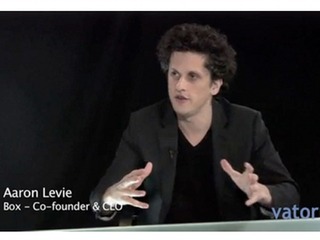
Big data company Code 42 locks in $52.5M
Accel Partners makes its first distribution from its new Big Data Fund to a Minneapolis company

Protecting digital information for companies is big business. One Minneapolis-based company has just gotten a sizable influx of capital that can help it compete in the world of big data.
Code 42 Software announced Tuesday afternoon that it pulled in a $52.5 million Series A round of funding let by Accel Partners. It also received participation from Split Rock Partners. The Accel money was the first distribution from its $100 million Big Data Fund, unveiled in early November.
The Big Data Fund is the first dedicated fund to a specific vertical in Accel’s history. The fund, which is made up of Accel’s existing capital, will be devoted to funding innovation across entire “big data stack” from infrastructure to enterprise applications.
The ‘Big Data’ fund is managed by multiple Accel partners in US, Europe, China, and India, including Ping Li, Rich Wong, and Andrew Braccia. Accel will also be partnering with thought leading big data advisors such as data scientists, software entrepreneurs, technologists and researchers to serve as a ‘guiding light’ to help think through investments and track entrepreneurs doing interesting things in the space.
The data protection company was founded by Brian Bispala, Mitch Coopet and Matthew Dornquast originally in 2007 as 'CrashPlan' and soon evolved into an enterprise-grade back-up system that now manages that security of 100 petabytes of data globally.
The intention of CrashPlan was to reinvent backup by developing an easy-to-use technology to protect data whenever and wherever it is created. After introducing CrashPlan to consumers, Code 42 used the knowledge gained in that process to develop and deliver software that is enterprise-grade.
The virtue of Code 42′s offering is that the software can be used for both public and private clouds. Dornquast explained to me in an interview that most large enterprises believe in a hybrid model, with four out of five of the company’s enterprise customers building their own private cloud as opposed to relying on an untrusted cloud.
This new funding will be used to accelerate multi-platform product development as wells as increase sales and marketing efforts internationally.
“The explosion of mobile devices and cloud services has created big data and security opportunity for the enterprise,” said Matthew Dornquast, co-founder and CEO of Code 42 Software, in a statement. “The CrashPlan suite of products is ideally positioned to provide continuous, real time data management and protection within these organizations.”
The company has a recognizable catalog of 4,000 customers globally including: Adobe, Google, Groupon, HP, Intuit, Kraft Foods, LinkedIn, NASA, National Geographic, Salesforce.com and Stanford University.
Ping Li of Accel Partners and Michael Gorman of Split Rock Partners will join Code 42’s board of directors.
“Big data continues to revolutionize data centers across all industries, opening up a massive market for entrepreneurial activity," Li say in a statement. "As devices and the data they generate continue to explode, Code 42 is primed to make a profound impact on information data management for consumer and enterprise devices with their cloud back-up and future innovative big data applications.”
Up until this point, Code 42 has been entirely self-funded and reached businesses in more than 200 countries. Over the last three years, the company has seen substantial revenue growth (500%) and has reached a staff of 86 individuals.
Code 42 is in the same marketplace as other information security companies such as Carbonite and Box.
It definatley takes some cash and clout to compete against Box, which told VatorNews this winter that it was adding 100,000 new users each week and is seeing a tripling in revenue from last year. Box just raised $81 million, and reportedly turned down a $500 million acquisition offer. As of the middle of December, the six-year-old company reached eight million users and more than 100,000 companies.
Related News


Box.net and Scality cloud storage get funded

Carbonite raises $20 million

Box revenue tripling year-over-year

